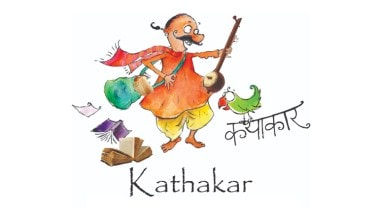The world is full of stories, be it a five-second video or a thick book. Even as most of our entertainment today can be found on our devices, there is a certain charm in hearing stories live from storytellers. This tradition is what the annual Kathakar, India’s only storytelling festival, aims to revive.
This year’s edition celebrated the diversity of stories, with artistes from across the world presenting their tales through various means and mediums in the national capital. If the chants by Grammy Award-winning Buddhist monks from the Paulong Sherabling Monastery near Dharamsala gave the audience a taste of oral traditions preserved from the 7th century, Uncle Larry Walsh of Australia, a member of the Tauragurong aboriginal tribe, demonstrated how the oral story is an important expression of his culture.
Ron Murray, an aborigine with Scottish blood, used the traditional musical instrument Didgeridoo to bring alive the native fauna of Wamba Wamba region in central Victoria, Australia.
Fascinated by Indian mythology, Emily Parish from the University of Kent, presented a very engaging and modern version of the story of Goddess Kali replete with expressions of hunger for blood and the slaying of demon Rakthabija.
Raconteurs from Australia, Poland, England and India, a shadow puppetry performance by artistes from Kerala, Dastangoi by award-winning actor, poet and theatre artiste Danish Hussain kept the audience mesmerised for three days of the event.
The festival, which strives to unravel the mystic and intricacies of story-telling traditions of divergent cultures, has been conceptualised by sisters Rachna, Prarthana and Shaguna Gahilote and was first launched in 2010 under the aegis of UNESCO as part of Ghummakkad Narain, a travelling literature festival in memory of ardent reader Thakur Vishva Narain Singh, the first Braille editor in India.
